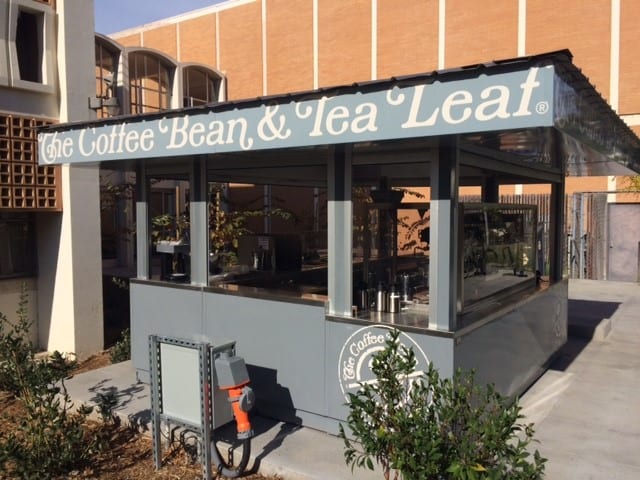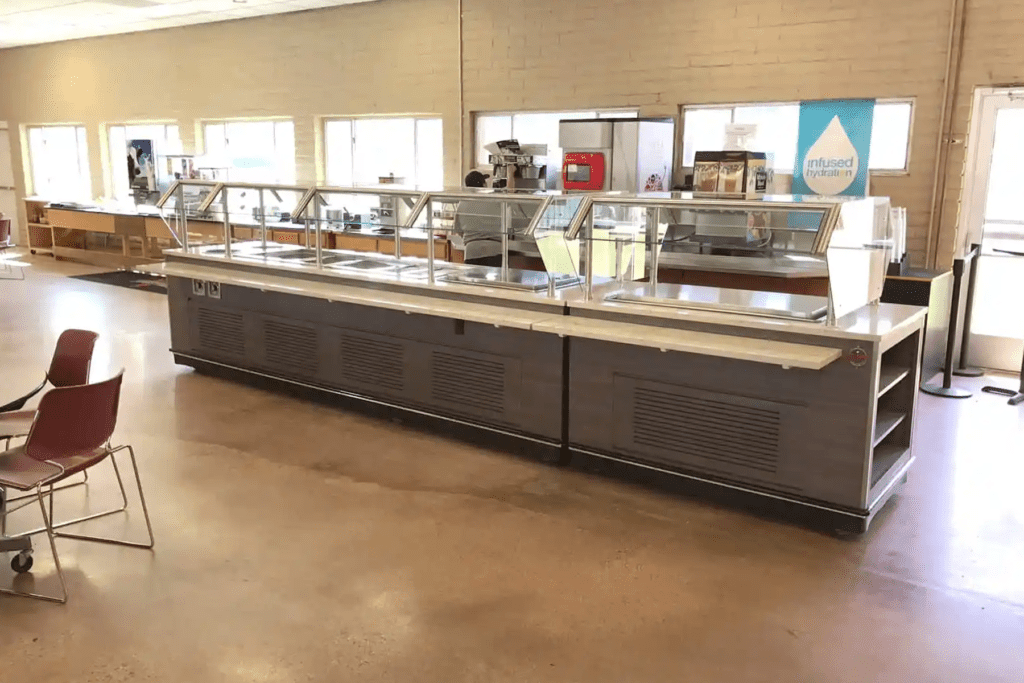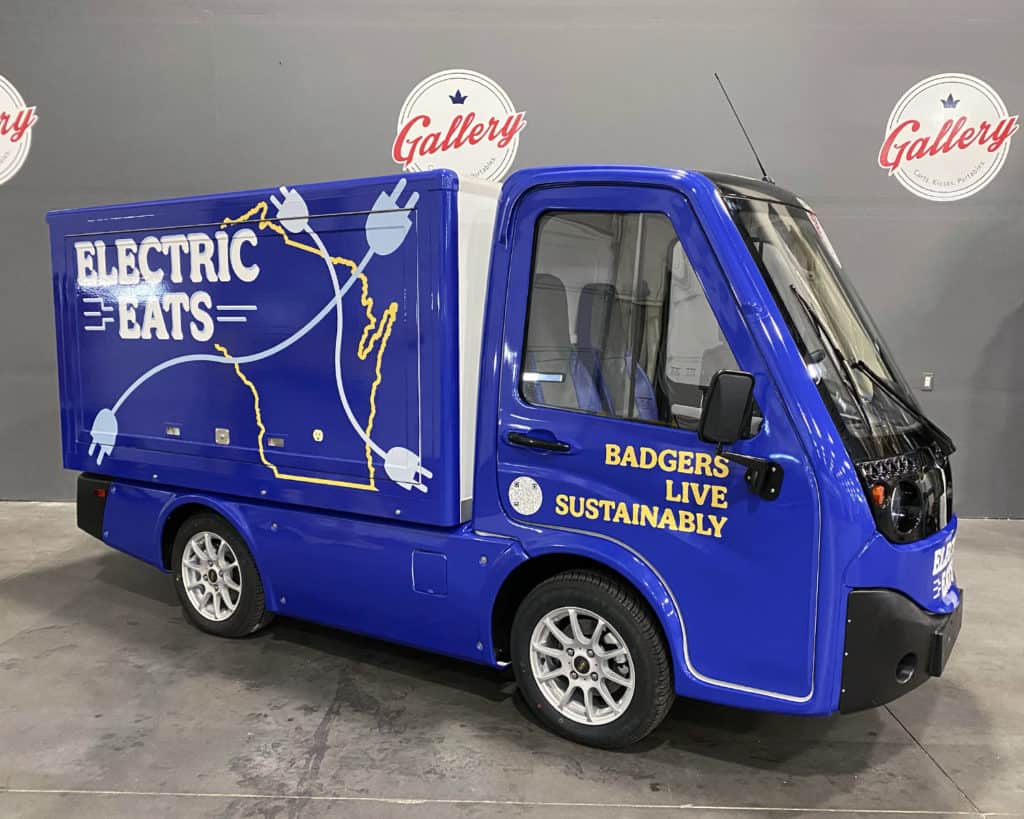The era of the traditional on-campus dining hall has been in decline for nearly a decade. Students and staff seek out more convenient options that don’t require them to be at a specific location–which may be far from their classes or recreation–at a specific time. Many campuses quickly began adapting to this shift in behavior by offering mobile food service with carts, kiosks, and e-vehicles. For others, it wasn’t until COVID-19 restrictions required campuses to provide socially distant dining options that they began to implement expanded mobile options to reach students and staff where they are.
Mobile Food Access Improves the Contactless Campus Experience

The pandemic demonstrated the many benefits of a contactless campus experience. Over the last few decades, colleges and universities have leveraged electronic card systems for access to dorm rooms, dining halls, library transactions, and payment options. Although few campuses had upgraded their technology to include smart cards or mobile IDs, the pandemic allowed many university administrators to rethink this initiative and consider investing in smart or mobile technologies.
Contactless technology eliminates the need for students to engage in face-to-face interactions to pay cashiers or touch readers handled by other campus personnel, preventing the spread of infectious diseases and adding a layer of convenience to administrators and students.
Mobile food access is a perfect complement to the contactless campus experience. Over 96% of college students have a smartphone and expect to use them on campus. Contactless mobile ordering allows students to place orders directly to their dining halls on their mobile devices and have the food ready for pickup later. This process minimizes lines and crowds, reduces food waste (meals are prepared to order), and decreases face-to-face interactions.
Mobile Food Access Is A Solution to Campus Staffing Shortages

By shifting to contactless payment systems, mobile ordering, and food pickup, colleges can better manage personnel shortages. Mobile food access eliminates specific cafeteria roles, allowing labor to be repurposed for other positions. These changes improve the student experience with faster service and expanded dining options without increasing costs. One campus touted that their shift to mobile ordering “increased throughput and sales by 30 percent without having to increase overhead costs.”
Mobile Food Access Supports Shifts Away from On-Premise Dining

Dining halls across the country are changing how they serve food on campus. Recently, some universities have embraced outdoor dining while others provide more grab-and-go options to reduce crowded cafeterias. These new options are found to be incredibly popular among students and staff.
In upstate New York, SUNY Plattsburgh renovated its dining hall to focus on grab-and-go options. The new focus on portability was just in time for the pandemic. “The template came about pre-COVID, but there were things we were focusing on—signature sandwiches, portability—that fit so well into our ‘new normal,'” said Christopher Mihalyi, resident district manager with Chartwells at SUNY Plattsburgh.
The shift to outdoor dining inspired a partnership between New Mexico State University and Sodexo to use e-vehicles to provide socially distanced dining options for students. The cart offers breakfast, lunch, and snacks and can be set up anywhere on campus.
In addition, Boston College’s catering team introduced ‘pandemic pop-ups,’ an outdoor patio with a rotating menu where students could purchase unique food options. The pop-ups were located in a part of campus that received a high amount of foot traffic, and students could pay using cash, credit cards, or their campus IDs. Although these pop-ups were introduced as a response to the pandemic, they are now a mainstay of campus life.
The shift to mobile food access is one of the most significant changes affecting college dining today. These options allow universities to meet student expectations for a mobile-enabled campus while mitigating staffing and supply chain shortages. To learn more about how Gallery Carts can help your campus navigate mobile food solutions visit our campuses page or contact a team member at the contact form below to learn more about what solutions we can provide for you.
Contact
Sources:
https://www.tandfonline.com/doi/abs/10.1080/15378020.2020.1814087?journalCode=wfbr20
https://www.food-management.com/colleges-universities/boston-college-s-pandemic-pop-ups-are-here-stay
https://www.retaildive.com/ex/mobilecommercedaily/sodexo-introduces-mobile-ordering-capabilities-to-25pc-of-college-campuses
https://www.retaildive.com/ex/mobilecommercedaily/7-eleven-convenience-goes-further-for-college-students-with-mobile-delivery
https://www.retaildive.com/ex/mobilecommercedaily/chipotle-spices-up-sales-with-mobile-delivery-for-college-students
https://er.educause.edu/blogs/sponsored/2017/9/considering-smartphone-mobile-access-in-your-campus-security-plan
https://www.food-management.com/colleges-universities/college-dining-trending-mobile-food-carts-dining-hall-renovated-meet-go-needs
https://www.campusidnews..com/mobile-credentials-for-a-contactless-campus-experience/
https://campuscommerce..com/mobile-food-ordering/